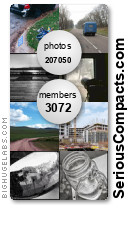This content has been moved to the new SeriousCompacts.com.
Click here to go to the new location
Megapixels - Are More Better?
Monday, July 14, 2008
Posted by Amin
![]() Labels:
megapixel myth,
megapixel race
Labels:
megapixel myth,
megapixel race
Megapixels - Are More Better?
2008-07-14T20:57:00-05:00
Amin
megapixel myth|megapixel race|
Subscribe to:
Post Comments (Atom)
Recent Posts
-
▼
2008
(254)
-
▼
July
(12)
- 'Photokina 2008 Speculation: Power Compacts' at 10...
- Ricoh GR Digital II Version 2.10 Firmware Update
- Sigma DP1 Video Review by David Pogue
- 'Usefulness' at Wouter Photoblog
- Panasonic LX3 vs LX2: Relative Sensor Sizes and Ef...
- Panasonic LX3 Sample Images and First Impressions ...
- New Panasonic Lumix DMC-LX3
- Megapixels - Are More Better?
- Serious Compacts Site News
- New Sigma DP1 Firmware (1.04) Added Functionality
- Panasonic DMC-FX500 Review at PhotographyBLOG
- Rumor: Coolpix P6000 - Return of the Serious Nikon...
-
▼
July
(12)

